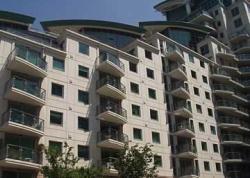St George Wharf - A Benchmark Illustration of the Advantages of Pre-cast Concrete
 St George Wharf - A Benchmark Illustration of the Advantages of Pre-cast Concrete
St George Wharf - A Benchmark Illustration of the Advantages of Pre-cast Concrete
St. George Wharf is a large, mixed-use development occupying an 8-acre brownfield site at Vauxhall on the South Bank of the Thames. The residential part of the scheme comprises five towers rising in steps to up to 22 storeys, oversailed with 'gull-wing' roofs. The striking prow shaped forms are designed to maximise views of the River Thames and to provide deep terraces for the penthouse accommodation. There are a number of on-site facilities available including shops, cafes and bistros situated around the piazza. The development's distinctive silhouette ensures the buildings are among the Thames' skyline's more recognisable features.
However, the construction method has been universally acclaimed as a model in modern methods and it was a demonstration project under the Government's Constructing Excellence programme. The exterior is a mixture of sea-green glass curtain walling with reconstructed stone finished precast concrete wall cladding panels and structural balcony units.
The developer St George plc (part of Berkeley Homes) and architect Broadway Malyan created a long term partnership with supplier Marble Mosaic Ltd at an early stage of the project to give supply chain security and guaranteed quality control. This early involvement also allowed the incorporation of additional features into the off-site fabrication process.
Precast concrete was chosen for the external wall cladding for its well-known advantages of low-maintenance, high quality finish and precision of construction. The size and proportion of the panels were carefully detailed, in particular to provide drainage and run-off for rainwater, avoiding staining. The panels on the upper floors match the appearance of Portland stone while on the two lowest floors the panels match the appearance of pink sandstone. This gives visual strength to the base of the building and echoes the colour of the small-scale red-brick buildings in the vicinity.
The full-height panels were delivered with the glazing already installed. The use of scaffolding was largely avoided as the panels were craned into position and quickly made watertight with a temporary sealant applied to the insides of the joints. To apply external sealants, trained workers used abseiling techniques.
The design of each precast balcony unit was developed to be as complete a component as can practicably be produced off-site. In addition to the reconstructed stone finish to its exposed faces, each unit included projecting reinforcement bars, stainless steel spigots for the attachment of balustrades and hoppers for the collection of rainwater. Furthermore, before delivery to site, the top face of each balcony unit was waterproofed and tiled. Marble Mosaic were then able to deliver the units, weighing up to 5 tonnes each, on a just-in-time basis for the frame contractor to incorporate into the structure as work progressed.
With precast balconies, the need to form, cast and finish them in-situ at height is eliminated and the problems of having to distribute tiling materials to each individual balcony, while adjacent finishing trades are working, are avoided. It also safely and efficiently overcomes the further challenges of the facing of the soffits and the tiling of the balconies having to be completed at height and in space-restricted and weather-exposed locations.
Marble Mosaic MD Stephen Maddalena said "St Georges Wharf perfectly demonstrates the direct and incidental advantages of precast cladding construction and evidences the valuable benefits to be gained by involving the pre-cast concrete supplier at an early stage. We first started working on this development in 1999 and our close relationship with St George and the architects has progressed through its seven phases, being work packages totalling in excess of £16m, and similar residential schemes in central London."